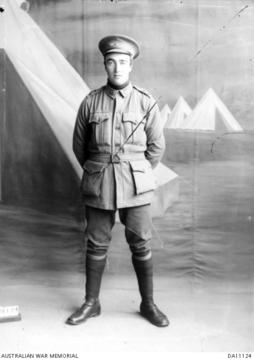STONE, Aubrey Harold
| Service Number: | 3508 |
|---|---|
| Enlisted: | 4 August 1915 |
| Last Rank: | Sergeant |
| Last Unit: | 52nd Infantry Battalion |
| Born: | Deloraine, Tasmania, Australia, 1 June 1894 |
| Home Town: | Penguin, Central Coast, Tasmania |
| Schooling: | Not yet discovered |
| Occupation: | Labourer |
| Died: | Ulverstone, Tasmania, Australia, 19 February 1965, aged 70 years, cause of death not yet discovered |
| Cemetery: |
Ulverstone General Cemetery, Tasmania |
| Memorials: |
World War 1 Service
| 4 Aug 1915: | Enlisted AIF WW1, Private, 3508, 12th Infantry Battalion | |
|---|---|---|
| 10 Nov 1915: | Involvement Private, 3508, 12th Infantry Battalion, --- :embarkation_roll: roll_number: '10' embarkation_place: Melbourne embarkation_ship: HMAT Ascanius embarkation_ship_number: A11 public_note: '' | |
| 10 Nov 1915: | Embarked Private, 3508, 12th Infantry Battalion, HMAT Ascanius, Melbourne | |
| 3 Mar 1916: | Transferred AIF WW1, Private, 52nd Infantry Battalion | |
| 4 Sep 1916: | Honoured Mention in Dispatches, Mouquet Farm | |
| 19 Jun 1917: | Promoted AIF WW1, Sergeant, 52nd Infantry Battalion |
Help us honour Aubrey Harold Stone's service by contributing information, stories, and images so that they can be preserved for future generations.
Add my storyBiography contributed by Stephen Brooks
Aubrey Harold Stone was the son of John Albert and Maria Hannah Stone of Penguin, Tasmania. His father died when he was only eight years of age.
Aubrey was transferred from the 12th to the 52nd Battalion during the reorganisation of the AIF in Egypt during early 1916.
In the 52nd Battalion’s first big attack at Mouquet Farm, Stone was mentioned in despatches for “General good work and devotion to duty. At Mouquet Farm on 3rd and 4th of September 1916 he was a stretcher bearer and did excellent work, continually carrying on under heavy shell fire. When about exhausted, he was told to rest but on hearing that volunteers were needed for important work he immediately put his hand up again.”
He soldiered on and became a reliable and experienced Sergeant in the unit. He was severely wounded at Villers Bretonneux on 24 April 1918, and was evacuated to England with a badly damaged shoulder and back. The wound made a large hole at his shoulder blade and even on healing he was left with limited and painful movement. As such, he was returned to Australia in late 1918.
His older brother, Ralph John Stone, was an original member of the 40th Battalion who was returned to Tasmania in 1917, with an amputated left arm.










